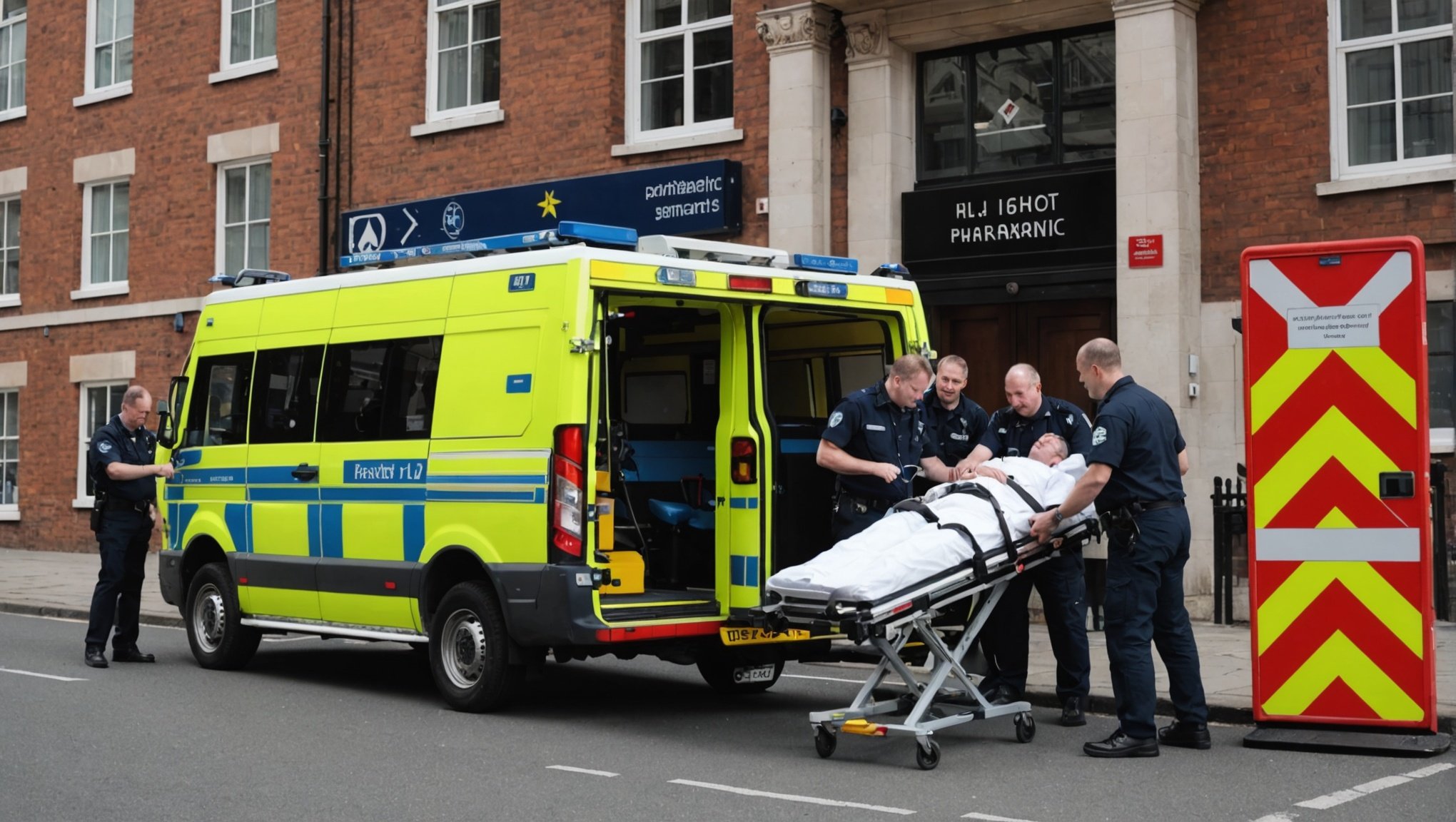The management of acute heart attack symptoms before hospital arrival is a critical aspect of cardiac care that can significantly impact patient outcomes. In recent years, numerous studies and trials have been conducted to explore new pre-hospital management protocols, aimed at improving patient outcomes and reducing mortality rates. In the UK particularly, paramedics are being equipped with new guidelines and protocols to help them effectively manage acute heart attack symptoms during the golden hour.
Incorporation of Pre-Hospital Thrombolysis
Thrombolysis, the process of dissolving dangerous clumps in blood vessels, has been a major focus in the pre-hospital management of acute heart attack symptoms. A recent trial, documented in the Annals of Cardiology, observed that paramedics who administered pre-hospital thrombolysis to STEMI (ST-Elevation Myocardial Infarction) patients, led to a significant reduction in mortality rates.
Also to see : What is the role of UK geneticists in offering prenatal screening for rare genetic disorders?
The UK’s National Institute for Health and Care Excellence (NICE) has since updated its guidelines for paramedics, recommending the administration of pre-hospital thrombolysis as part of their management protocol for acute heart attack symptoms. The pre-emergency protocol now includes properly trained paramedics identifying potential STEMI cases, providing initial treatment with aspirin, and using a mobile ECG machine to transmit results to the hospital.
Implementation of the HEART Score
Another innovative protocol implemented by UK paramedics is the usage of the HEART (History, ECG, Age, Risk factors, and initial Troponin) Score. This is a simple and effective tool employed to stratify the risk of major adverse cardiac events. Google Scholar lists numerous studies supporting its effectiveness in the pre-hospital setting.
This might interest you : How can UK urologists use telemedicine to improve follow-up care for prostate cancer patients?
The HEART Score allows paramedics to make an early assessment of the patient’s risk level. This prediction helps in making on-the-spot decisions about whether to transport the patient to the hospital for immediate invasive procedures or to treat the patient on site. This protocol reduces the time to treatment, thus potentially improving survival rates.
Enhanced Training for Paramedics in Echocardiography
Echocardiography, commonly known as a cardiac echo, is a sonogram of the heart. Recently, paramedics in the UK have undergone enhanced training to use this tool. It helps to visualize the structure and the functioning of the cardiac chambers and valves, thus significantly assisting in the diagnosis of any acute myocardial infarctions.
By having this skill, paramedics are able to diagnose, initiate treatment, and inform the hospital about the condition of the patient before they arrive at the hospital. This gives the hospital team adequate time to prepare for the incoming patient, thereby reducing the time between hospital arrival and the start of definitive treatment.
Application of Remote Ischemic Conditioning
Remote Ischemic Conditioning (RIC) is a relatively new technique that has been included in the pre-hospital management of acute heart attack symptoms. The CONDI 2/ERIC-PPCI trial, which was a large-scale randomised control trial, demonstrated the effectiveness of this procedure in reducing cardiac reperfusion injuries in STEMI patients.
RIC involves the application of a blood pressure cuff around the patient’s upper arm and then inflating it to cause brief periods of ischemia. This non-invasive procedure could be performed in the ambulance during the transportation of the patient to the hospital. The procedure triggers the body’s natural defenses against the harmful effects of reperfusion, thereby potentially limiting infarct size and improving patient outcomes.
Use of High-Sensitivity Troponin Tests
Lastly, the use of high-sensitivity troponin tests is another innovative protocol being adopted by UK paramedics in the pre-hospital management of heart attack symptoms. These tests are used to measure the level of cardiac-specific troponin in the blood, which can indicate damage to the heart.
The new high-sensitivity tests provide results much quicker than standard tests, enabling faster diagnosis and treatment of myocardial infarction. In the pre-hospital setting, this could mean that patients are being diagnosed and treated more quickly, perhaps even before reaching the hospital. This not only reduces the time to treatment but also helps in reducing the mortality rate associated with acute myocardial infarction.
Extended Role of Paramedics in the Administration of Antibiotics
Paramedics in the UK are now trained to administer antibiotics to patients exhibiting symptoms of acute myocardial infarction (AMI), a crucial step in pre-hospital management. This is due to the recognition that infections can dramatically heighten the risk of heart attacks and other acute coronary events, as documented in various studies registered on PubMed Google.
The protocol involves the administration of broad-spectrum antibiotics to patients who present with heart attack symptoms and fever or other signs of infection. By initiating antibiotics therapy prior to hospital arrival, the risk associated with the underlying infection, and its potential impact on the heart, can be significantly mitigated.
Moreover, studies suggest that certain antibiotics have cardioprotective effects, providing additional benefits to patients suffering from AMI. As such, the prompt initiation of antibiotic therapy by paramedics can potentially reduce damage to the heart muscle and improve patient outcomes. This protocol complements the established practice of administering aspirin and other clot-dissolving drugs as part of pre-hospital management.
Comprehensive Training in the Recognition of Atypical Heart Attack Symptoms
Heart attacks don’t always present with stereotypical chest pain and, therefore, paramedics are being extensively trained to recognize atypical heart attack symptoms. According to PubMed Google, approximately one-third of all myocardial infarction patients do not experience chest pain, and these patients are more likely to be misdiagnosed and undertreated.
Paramedics are trained to take into account factors such as age, gender, and the patient’s overall health status when responding to emergency calls. For example, women, elderly patients, and those with diabetes are more likely to present with atypical symptoms such as extreme fatigue, shortness of breath, abdominal discomfort, or dizziness. The European Society of Cardiology has emphasized the importance of early recognition and treatment of these atypical presentations to improve survival rates.
Accurate identification of atypical heart attack symptoms can help to streamline the patient’s journey, ensuring they are transported to the most appropriate hospital and receive the most suitable treatment without unnecessary delay.
Conclusion
In summary, the recent protocols used by UK paramedics in the management of heart attack symptoms before hospital arrival, encompass a multifaceted approach. The protocols include pre-hospital thrombolysis, use of the HEART Score, enhanced training in echocardiography, application of Remote Ischemic Conditioning, and use of high-sensitivity troponin tests. The more recent implementations involve paramedics administering antibiotics and identifying atypical heart attack symptoms.
These protocols, backed by studies on Google Scholar and PubMed Google, have been designed to enhance the pivotal role of paramedics, and to improve the critical “golden hour” of treatment. With the ultimate goal of reducing mortality and improving patient outcomes, these protocols are continually being reviewed and refined based on clinical evidence and the latest advancements in emergency medicine and acute coronary syndrome management. The rapid pace of progress in this area underscores the importance of ongoing education and training for paramedics, to ensure they remain at the forefront of pre-hospital acute cardiac care.











